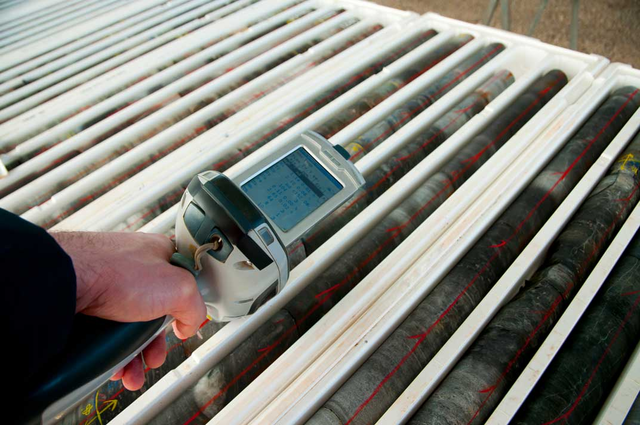
Introducing CELLIANT XRF Fabric Testing
May 01, 2025 – The pursuit of continual improvement has led us to adopt a powerful new method of analysis for CELLIANT-powered fabrics: X-Ray Fluorescence (XRF) Testing…

People take uniforms for granted. Whether they are in the corporate, athletic, educational, healthcare, or military sectors, uniforms play many roles. With the advent of smart technologies, uniforms may be poised to evolve beyond function to critical resources that actively influence wearers and other key stakeholders like employers, medical providers, and coaches.
Below, read more from an interview with Lucas Tyson, VP of Business Development and Corporate Strategy at Hologenix, originally published in Textile Technology.
For many companies, uniforms are the “calling card” of the brand. Not only do employees feel a sense of belonging when they are in matching uniforms, but they are also easier for customers to identify. In many situations, uniforms include practical elements, like places to store anything from pens to equipment. Uniforms may even serve in a protective or hygienic capacity, as in the case of fire-resistant, heavy-duty lab coats.
Although high-quality uniforms grab attention and foster togetherness efficiently, they do not have to be bulky or cumbersome. On the contrary, though some uniforms are standard issue rather than comfortable and practical, plenty are designed to bring wearers high degrees of comfort and professionalism without compromising overall aesthetics.
In other words, uniforms allow organizations to be flexible when it comes to outfitting their crews. Whether workers need moisture-wicking fabrics, reinforced knee areas, or ample pockets, uniforms can fit the bill.
If asked to name the best employee uniforms, consumers might think of their favorite retailers, restaurants, or service providers whose employees wear similar apparel. Alternatively, they might think of the military. However, the best employee uniforms of the future are going to be those that blend not just functionality and aesthetics in one durable package but that apply the latest technology to help the wearer.
Perhaps a good way to conceptualize this “uniform of tomorrow” is by likening it to a performance-enhancing tool rather than a mere wearable like the Oura Ring. While the Oura Ring collects and analyzes health metrics to provide actionable insights for the wearer’s well-being, the uniform of tomorrow is designed from the ground up to foster an environment where individuals can perform at their peak. By marrying cutting-edge fabric technology with ergonomic design, these uniform aims to ensure that when the wearer is clad in attire that resonates with professionalism and functionality, their performance elevates. It transcends the superficial appeal of trendy wearables and taps into the profound impact of feeling good and confident in what one is wearing, particularly when such attire is engineered with the person’s performance and well-being at the core of its design philosophy.
Uniforms may never become so eye-catching that they overtake New York Fashion Week. Nonetheless, uniforms with smart tech could raise a lot of eyebrows — in a good way. After all, anything that brings the textile market to a whole new level will have significant effects. And smart textiles and tech can take uniforms to revolutionary new levels.
It is now possible for technology to be incorporated directly into the fabric that is used to create uniforms. This is a game-changer that sets the stage for a host of benefits that can greatly enable and enhance a wearer’s experience and performance. For example, smart textiles can help the body regulate its temperature, so it is easier to adapt to various environmental conditions, from heat to humidity.
Smart textiles can monitor vital signs and alert wearers to potential health issues, too. This allows wearers to improve their safety and security by decreasing the likelihood of injuries or unwanted health reactions such as heat stroke. Now, manufacturers can conceivably integrate sensors and communication devices into fabrics and textiles. (Again, this is like a wearable such as the Oura.) The information can be sent into a database for real-time remote monitoring.
In 2022, research teams at MIT began exploring the use of smart tech in form-fitting textiles. Through testing, they discovered that it was possible to add pressure sensors to fabric through a process of digital knitting. Perhaps more impressively, the smart fabric could sense what the wearer was doing — and how the movement was potentially affecting the wearer’s posture and health — with nearly perfect accuracy. Could a uniform that helps the wearer improve their posture or reduce muscle fatigue be an application of MIT’s smart fabric tech research? Time will tell.
However, time is moving quickly, and some makers are not waiting to jump into the smart clothing market. For this reason, the market is predicted to reach $5.3 billion by next year. Entrepreneurs know a good thing when they see it, and the uniform industry is ready for a massive upgrade. Whether it is LED filaments, gesture-control sensing devices, or infrared, smart additions are coming to uniforms. In fact, several companies are leading the way with their performance-enhancing smart textiles and smart ingredient brands.
Agion Antimicrobial is a unique technology that can be added to fabrics to inhibit bacteria, mildew, and mold growth. The company uses the inclusion of copper and silver in a product that can be built into a textile.
A uniform that naturally resists odors and decay would be more than just practical. It would allow for less laundering while providing long-lasting protection. And this could be done in a more environmentally sound way thanks to the limited use of chemicals.
The notion of a bioresponsive textile was once only a dream. Now, it’s possible to create fabrics that work with the body to achieve improved wellness. For example, some clothing manufacturers are weaving their textiles with an ingredient brand that converts outgoing body heat into infrared energy. This energy can then be concentrated back into the body to increase local circulation, improve cellular oxygenation, and prompt faster recovery.
Therefore, it makes sense to presume that uniforms created from this type of bioresponsive textile could assist in supporting worker stamina, strength, temperature regulation, and energy levels. In an age where everyone is looking for ways to enhance worker wellness, bioresponsive textiles seem like ideal and reasonable solutions.
One material on the market uses advanced aramid fiber, which is heating up the market thanks to its durability to withstand extreme temperatures. It’s risen to be an essential component in the protective uniform for industrial workers, firefighters, and other people who work in environments with exposure to fluctuating heat and flames.
Employers everywhere are starting to wake up to the reality that the uniforms they issue can do much more than be mere branded pieces of clothing. With the inclusion of smart technologies, advanced materials, and design innovations, uniforms can transcend their former roles and become more important than ever.
Interested in discussing this topic and more with our team? Fill out the form below to get in touch.
The interview was conducted by the TextileTechnology Team with Lucas Tyson, Vice President of Business Development and Commerical Strategy of Hologenix, LLC.


May 01, 2025 – The pursuit of continual improvement has led us to adopt a powerful new method of analysis for CELLIANT-powered fabrics: X-Ray Fluorescence (XRF) Testing…

February 21, 2025 – Photobiomodulation (PBM), sometimes referred to as low-level light therapy, is a form of light therapy that uses specific wavelengths of red and near-infrared…

September 13, 2024 – Understanding metabolic rate is important because it plays a key role in energy levels and overall well-being. While metabolic rate varies…
To access all of our reports please input your email below.
Contact us at marketing@celliant.com
Thank you for your request. Please download the brochure below.
Sign up for the latest Celliant news and innovations.
REQUEST INFORMATION